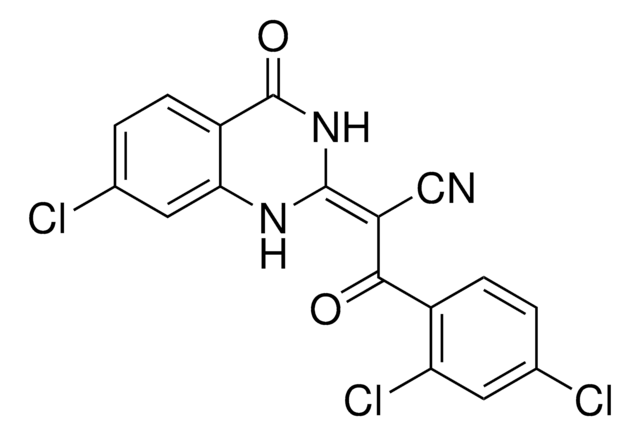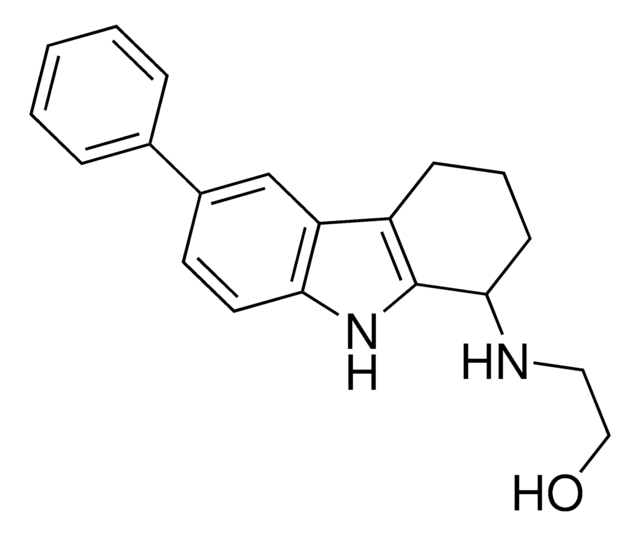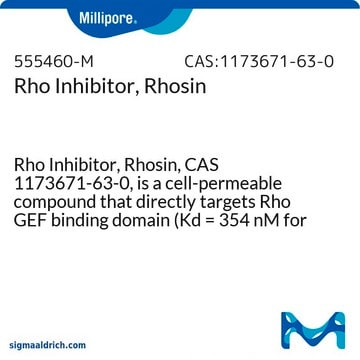There is a slight difference in the chemical structure of each compound. Cytochalasin B is a cell-permeable fungal toxin. It Inhibits cytoplasmic division by blocking the formation of contractile microfilaments, inhibits cell movement, and induces nuclear extrusion. Cytochalasin B shortens actin filaments by blocking monomer addition at the fast growing end of polymers. It also Inhibits glucose transport and platelet aggregation, blocks adenosine-induced apoptotic body formation without affecting activation of endogenous ADP-ribosylation in leukemia HL-60 cells. Dihydrocytochalasin B (DCB) is a member of the cytochalasin mycotoxin family that inhibits actin assembly. It has an effect on cell motility and morphology similar to that of cytochalasin B. However, it does not inhibit glucose transport. The following publication may be of interest:
https://pubmed.ncbi.nlm.nih.gov/272649/
250233
Cytochalasin B
from Helminthosporium dematioideum, ≥98% (HPLC), solid, cell-permeable fungal toxin, Calbiochem®
Sinonimo/i:
Cytochalasin B, Helminthosporium dematioideum
Scegli un formato
Scegli un formato
About This Item
Prodotti consigliati
Nome del prodotto
Cytochalasin B, Helminthosporium dematioideum, Cell-permeable fungal toxin.
Livello qualitativo
Descrizione
Merck USA index - 14, 2790
Saggio
≥98% (HPLC)
Stato
solid
Produttore/marchio commerciale
Calbiochem®
Condizioni di stoccaggio
OK to freeze
protect from light
Colore
white
Solubilità
methanol: 20 mg/mL
DMSO: 50 mg/mL
Condizioni di spedizione
ambient
Temperatura di conservazione
−20°C
Stringa SMILE
N1[C@H]([C@H]3[C@@]4(OC(=O)\C=C\[C@@H](CCC[C@H](C\C=C\[C@H]4[C@@H](C(=C)[C@H]3C)O)C)O)C1=O)Cc2ccccc2
InChI
1S/C29H37NO5/c1-18-9-7-13-22(31)15-16-25(32)35-29-23(14-8-10-18)27(33)20(3)19(2)26(29)24(30-28(29)34)17-21-11-5-4-6-12-21/h4-6,8,11-12,14-16,18-19,22-24,26-27,31,33H,3,7,9-10,13,17H2,1-2H3,(H,30,34)/b14-8+,16-15+/t18-,19-,22-,23+,24+,26+,27-,29-/m1/s1
GBOGMAARMMDZGR-TYHYBEHESA-N
Descrizione generale
Azioni biochim/fisiol
Blocking the formation of contractile microfilaments
Avvertenza
Attenzione
Ricostituzione
Altre note
Theodoropoulos, P.A., et al. 1994. Biochem. Pharmacol. 47, 1875.
Benya, P.D., and Padilla, S.R. 1993. Exp. Cell Res. 204, 268.
Cairns, M.T., et al. 1991. J. Biol. Chem.266, 8176.
Nowak, D. 1990. Biomed. Biochim. Acta49, 353.
Wang, F., et al. 1990. Biochem. Biophys. Res. Commun.171, 543.
Edwards, S.W., and Lloyd, D. 1988. FEBS Lett.227, 39.
Note legali
Avvertenze
Danger
Indicazioni di pericolo
Consigli di prudenza
Classi di pericolo
Acute Tox. 1 Inhalation - Acute Tox. 2 Dermal - Acute Tox. 2 Oral - Repr. 2
Codice della classe di stoccaggio
6.1A - Combustible acute toxic Cat. 1 and 2 / very toxic hazardous materials
Classe di pericolosità dell'acqua (WGK)
WGK 3
Certificati d'analisi (COA)
Cerca il Certificati d'analisi (COA) digitando il numero di lotto/batch corrispondente. I numeri di lotto o di batch sono stampati sull'etichetta dei prodotti dopo la parola ‘Lotto’ o ‘Batch’.
Possiedi già questo prodotto?
I documenti relativi ai prodotti acquistati recentemente sono disponibili nell’Archivio dei documenti.
I clienti hanno visto anche
-
Cytochalasin B, Helminthosporium dematioideum & other option is Dihydrocytochalasin B. What is the difference?
1 risposta-
Utile?
-
Filtri attivi
Il team dei nostri ricercatori vanta grande esperienza in tutte le aree della ricerca quali Life Science, scienza dei materiali, sintesi chimica, cromatografia, discipline analitiche, ecc..
Contatta l'Assistenza Tecnica.












